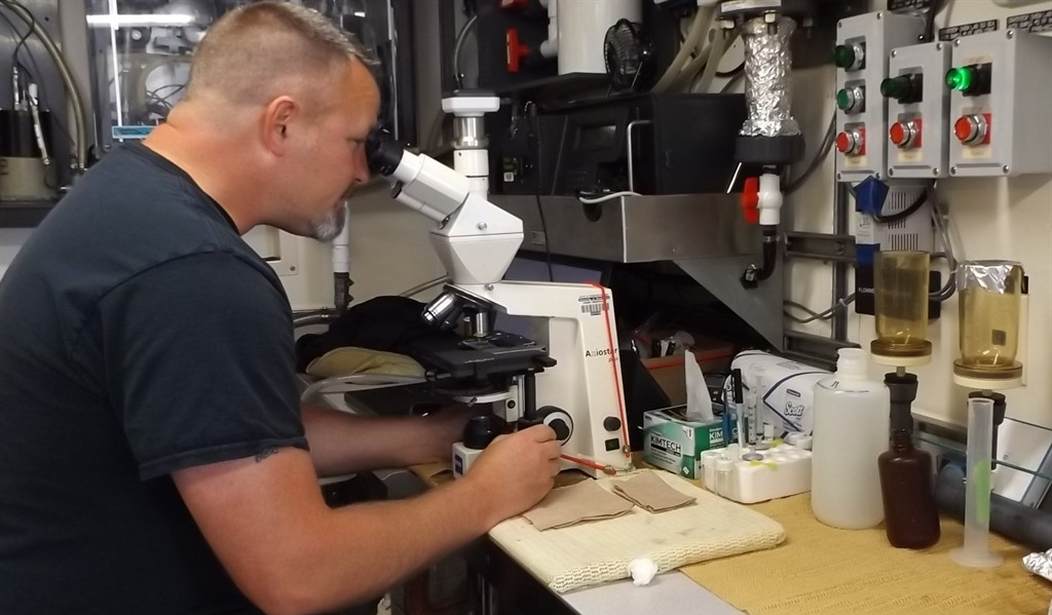The Centers for Disease Control and Prevention (CDC) reports that cases of a deadly fungus tripled in the United States from 2019 to 2021. The fungus, Candida aurist, has caused illness and death since it was first detected in the United States. The CDC rates it as an “urgent threat”, the highest level of concern.
There are three reasons the CDC has rated the fungus with its highest level of concern- it is multidrug-resistant, it spreads easily in healthcare facilities, and it can cause severe, invasive infections with high mortality rates. The authors of the CDC report wrote that the fungus “has continued to cause illness and death nationwide.” Candida aurist was first reported in the United States in 2016 and cases have jumped every year.
Candida aurist was reported in the U.S. in 2016 and cases have climbed ever since. Annual clinical case counts rose to 476 in 2019 before increasing to 756 in 2020, a 59% jump. Cases then soared to 1,471 in 2021, which is an additional 95% jump.
Colonization screening of cases also increased, researchers from the CDC wrote in the Annals of Internal Medicine. There were 1,310 cases in 2020, a 21% increase from 2019, and a 209% increase to 4,041 cases in 2021.
There were a total of 3,270 clinical cases and 7,413 screening cases of C. auris from 2019 to 2021, with 17 states reporting their initial cases.
Why are we only now hearing about this lethal fungus in 2023 when it’s been around since 2016, the year when it was first reported? If the number of cases is increasing so quickly, why hasn’t the fungus been in the news until now? Maybe the coronavirus pandemic knocked it off the news cycle radar for a couple of years, as it did about everything else in our lives, but if it has been around since 2016 in the United States, that the CDC knows of, why the secrecy? It may very well be because the CDC doesn’t want to panic people. It’s alarming that a fungus this easily spread and deadly is drug-resistant and that it easily spreads in healthcare facilities, like nursing homes.
Treatment-resistant cases rose from six pan-resistant and three echinocandin-resistant isolates reported in 2020 to seven pan-resistant and 19 echinocandin-resistant isolates in 2021.
“Even this subtle increase is concerning because echinocandins are the first-line therapy for invasive Candida infections and most C. auris infections,” the authors wrote. “Several new antifungal medications are in development, but more research is needed to understand outcomes for patients with these highly resistant strains and to guide treatment.”
One of the authors, Meghan Lyman, wrote in a press release that “the rapid rise and geographic spread of cases is concerning and emphasizes the need for continued surveillance, expanded lab capacity, quicker diagnostic tests, and adherence to proven infection prevention and control.”
The CDC’s 2019 Antibiotic Resistance Threats Report identified C. auris as an urgent threat in the U.S.
And last year, the World Health Organization put it on the fungal priority pathogens list. WHO assistant director-general of antimicrobial resistance Hanan Balkhy said in a press release at the time, “fungal infections are growing, and are ever more resistant to treatments, becoming a public health concern worldwide.”
Again, were there any press releases or news reports on the CDC’s finding in 2019? I don’t remember an alarm going off about lethal fungi at the time but I’ve slept since then. I do know that the medical community has been warning about a growing number of maladies that are becoming drug-resistant. Many doctors blame that on over-prescribing antibiotics.
The CDC states that 30% to 60% of people with C. auris infections have died. “We don’t know if patients with invasive C. auris infection are more likely to die than patients with other invasive Candida infections,” the CDC wrote.
At first, cases of fungus came from other countries. But now, the transmission of the fungus is blamed mostly on healthcare transmission. It is happening in post-acute care facilities, such as long-term acute care hospitals and ventilator-capable skilled-nursing facilities. The use of devices, like ventilators, increases the likelihood of the fungus growing.
It is considered an ongoing health threat. The fungus germs can be on one person’s skin without that person showing infection while it spreads to another person.
Cases may be underestimated due to limited screening resources. The CDC is increasing screening through the American Rescue Plan Act. Since the bill passed in 2021, screening capacity rose from seven regional labs to more than 26 labs across the country.
The authors of the report are hopeful that the fungus can be mitigated and regionally contained. Staff and equipment shortages because of the COVID-19 pandemic can eventually be managed. The real highlight is the importance of infection control in hospitals and long-term care facilities. That needs special care, not only during times of pandemic care but in everyday nursing care. Patients in long-term care facilities, like nursing homes, are particularly susceptible due to being immunity-compromised and dependent on medical devices.
It doesn’t get much notice but fungal infections are responsible for approximately 1.5 million lives each year. The pandemic reduced resources but that should be easing now with the pandemic in an endemic stage. CDC should continue to release reports on the fungus and raise awareness among healthcare facilities. Sanitation plays a big part in fungus control. That is pretty easy to fix.








Join the conversation as a VIP Member